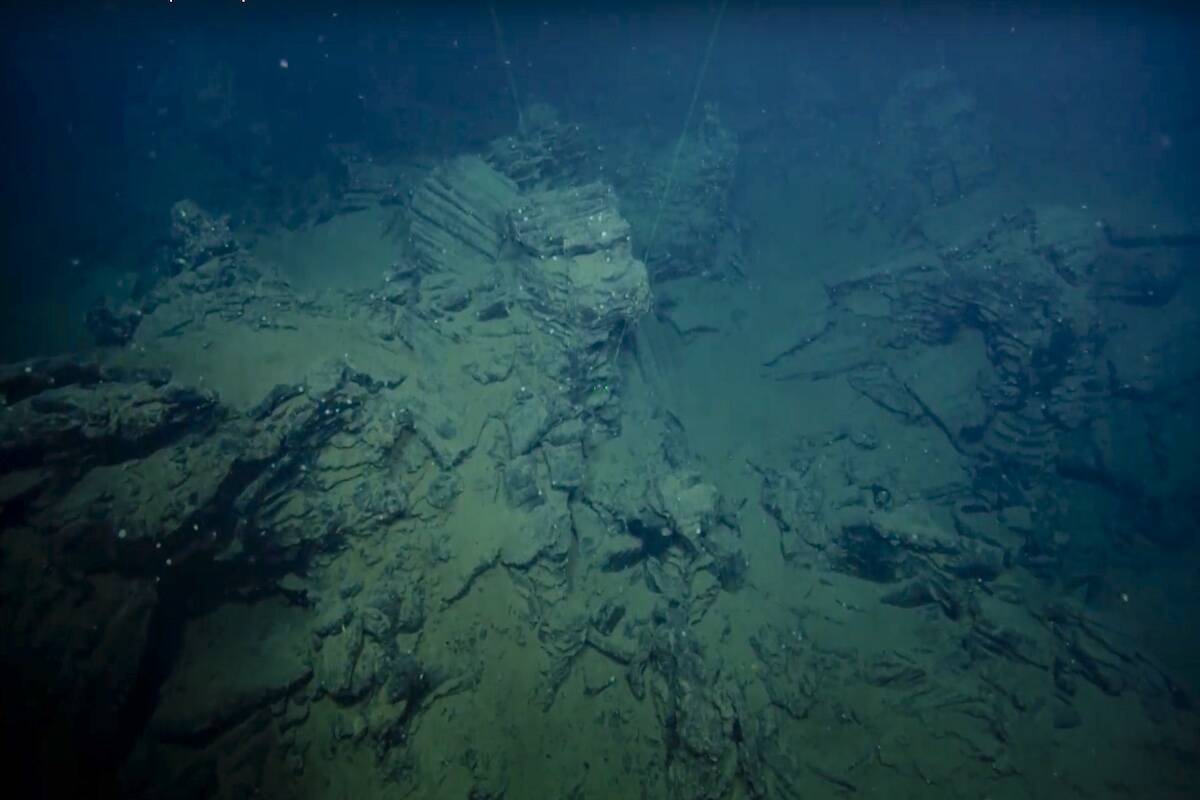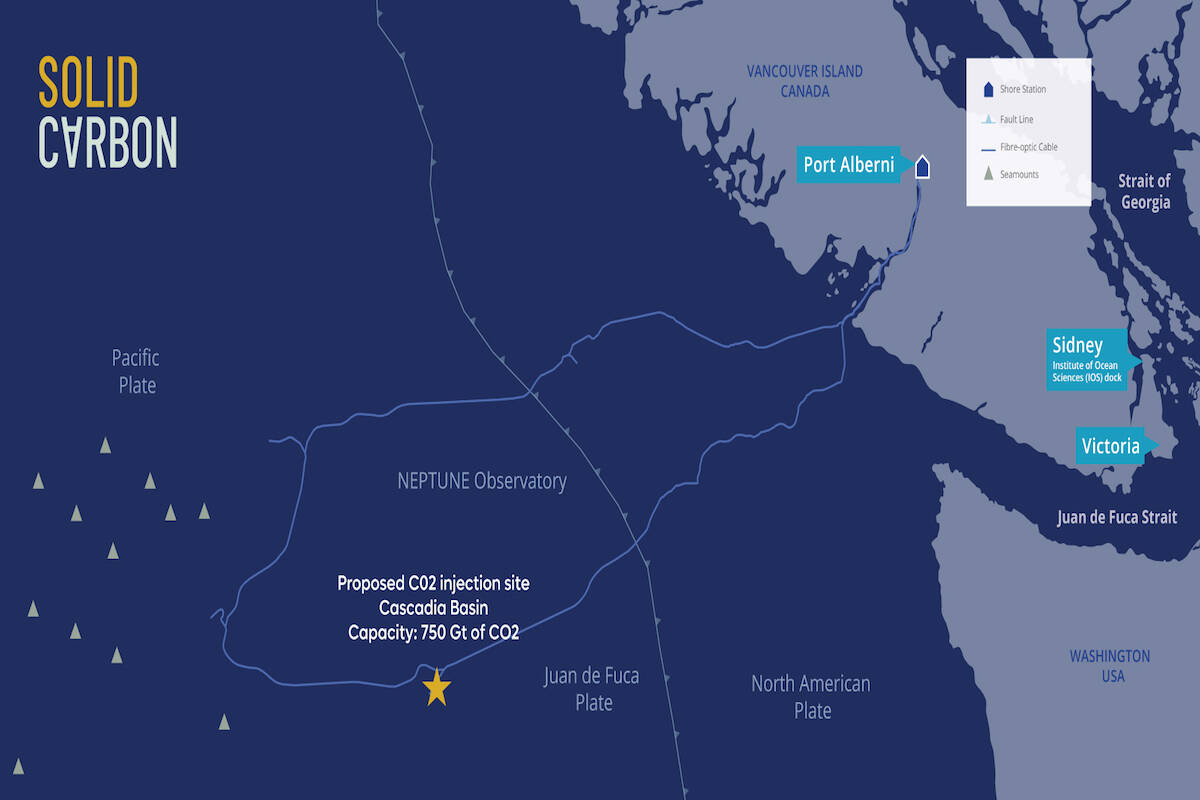Authors of a new study are readying to move ahead with a plan to pump planet-warming emissions below the ocean floor after finding there’s likely no risk of the process causing earthquakes.
The Solid Carbon project is looking to capture carbon dioxide from the atmosphere and pump it into the sediment at the bottom of the ocean where it will be permanently stored off Vancouver Island.
Researchers involved in the project, which is led by the University of Victoria’s Ocean Networks Canada (ONC) and funded by the Pacific Institute for Climate Solutions, have released a study finding the risk of causing seismic activity is below 0.01 per cent.
Geophysicist Eneanwan Ekpo Johnson used advanced computer modelling to see if injecting 2.5 megatons of CO2 annually at the study site would induce fault slip, where slabs of earth slide past one another and cause earthquakes.
“The amount of CO2 being stored there wouldn’t cause that movement,” said Johnson, who led the study through her ONC and UVic science postdoctoral work. “It’s really a way forward in terms of the overall contribution to the reduction of CO2 in the atmosphere, so it’s really reassuring.”
Solid Carbon’s plan is to inject the CO2 into porous, permeable basalt lying beneath the Cascadia Basin, which is 200 kilometres off the west coast of Vancouver Island, where it would react with other minerals and eventually solidify into carbonate rock.
While people may be nervous about pushing gasses into a tectonically active area that’s prone to earthquakes, the researchers say their study shows the risk is practically non-existent. The Cascadia Basin location was chosen because of its large capacity for sequestering CO2.
“It’s definitely the largest reservoir for putting CO2 in that we know of and it’s certainly the safest and the most durable,” said Martin Scherwath, the study’s co-author and an Ocean Networks Canada senior scientist. “It’s going to be there, safe, for essentially ever.”
Kate Moran, ONC president and Solid Carbon’s principal investigator, said the project offers the opportunity to safely remove decades of anthropogenic emissions and help avert the climate crisis.
The Earth has the potential to sequester 10 gigatons of CO2 emissions per year by 2050 in the basalt, which Solid Carbon said equates to about half of the reductions needed to keep the planet habitable for people.
With the feasibility study successful, the next step will be to secure funding for field testing the process and then to hopefully take the negative emission technology to multiple injection sites.
“If we have 1,000 holes spread over the globe, we then have a gigaton scale which is really what’s necessary,” Scherwath said.
The end goal is to have self-sufficient floating platforms out in the sea that would use wind and solar power to draw in the gasses and pump them into the depths below.
“The final solution is to get completely away from land and not even have to worry about the transport of the CO2, but right now direct air capture is only happening on land at relatively small scales,” Scherwath said.
“The long-term hope is that it is a real climate solution.”


